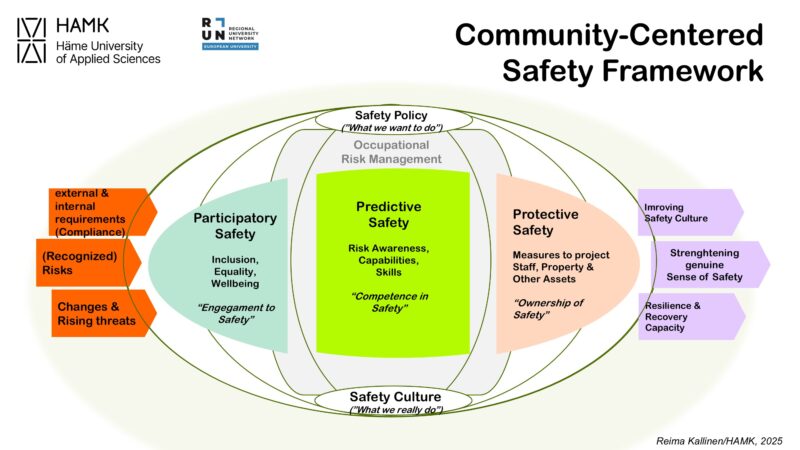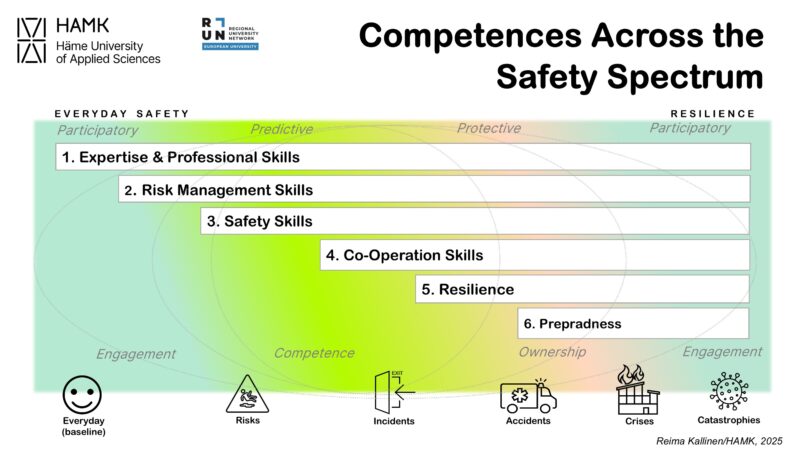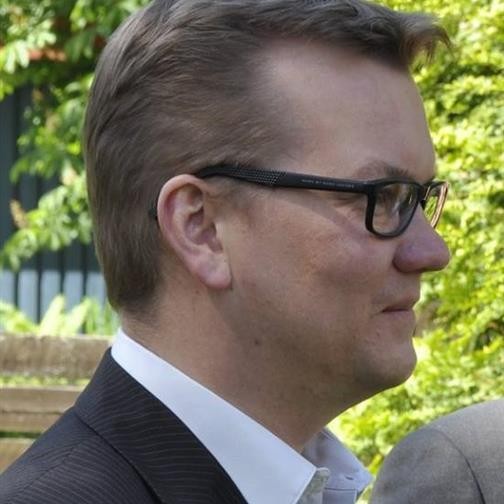
Safe HAMK
Everyday safety and resiliense
The core of our safety work is Community-Centered Safety Thinking. It is an approach that emphasizes the role of the community in promoting and maintaining safety. In this thinking, safety is seen as a shared responsibility of the community, where every member actively participates in improving safety. It is being developed as part of well-being, and it has a strong connection to competence development, work and study well-being, DEIA efforts, and strengthening a sustainable higher education culture.
Read more about community-based safety thinking at the bottom of the page.
Did you notice something? Report a Safety Issue!
Immediately report a safety issue when, for example
- if you notice a safety deficiency in a study or work situation
- if you experience a near-miss or threatening situation
- if you experience harassment or inappropriate behaviour
The form is secured and also allows anonymous reporting.
Safer Space Principles
At HAMK, we are committed to following the principles of a safer space in all our activities. These principles are designed to help ensure that every event is a positive and rewarding experience for all participants.
We acknowledge that a space or event cannot always be entirely safe for everyone, and we encourage all members of our community and guests to actively contribute to an atmosphere that promotes safety and well-being. Let’s take care of one another.
Our core principles include:
- We respect each individual’s personal physical and psychological boundaries and do not cross them without consent.
- We avoid assumptions and generalisations, and we honour each person’s individuality and identity.
- We engage in constructive dialogue and ensure everyone has the opportunity to participate. We respect each other’s opinions, experiences, and perspectives. We remain open to new ideas and ask questions with a willingness to learn.
- We listen to feedback and adjust our behaviour if someone expresses discomfort caused by our actions.
- We take responsibility for our own actions and apologise if we unintentionally or intentionally cause harm.
- We always address any observed or experienced harassment, inappropriate behaviour, or threats to safety immediately and offer support in resolving the situation.
If you experience or witness harassment or other inappropriate behaviour during an event that continues despite expressing discomfort, you can contact one of the following:
For students:
- Your degree programme manager
- HAMKO’s harassment contact persons
- Student wellbeing services (study psychologist or student welfare officer)
- HAMK Safety Officer
For staff:
- Your line manager
- Occupational safety representatives
- HAMK Safety Officer
You may also report your experiences or observations confidentially via the Safety Report (link).
HAMK University rules
The HAMK University Rules guide behaviour, use of facilities, and safety practices across both campus and digital environments.
Emergency and safety plans for campuses
The campus emergency and safety plans provide instructions for various emergency and exceptional situations. Familiarize yourself carefully and regularly with your campus’s emergency plan.
Safety instructions
Emergency number 112
First aid
Fire
Bullying and harrasment
Community-Centered Safety Thinking
The key principles of the Community-Centered Safety Thinking are:
Everybody’s Business
- Shared Responsibility: Everyone has the duty and right to contribute to the safety of our community.
- Active Participation: Encourage all members to actively engage in safety initiatives and practices.
- Empowerment: Provide individuals with the knowledge and tools they need to contribute to a safe environment.
Community and Inclusion
- Well-being and Togetherness: Safety work supports the well-being of the community and promotes a sense of togetherness.
- Inclusive Safety Efforts: Every member of the community has the right and duty to promote safety.
- Skill Development: Community safety skills are developed through activities like safety walks and drills.
Proactive Action
- Risk Identification and Mitigation: The goal of safety work is to identify, prevent, and mitigate safety risks to the community and its members.
- Risk Management: Proactive safety includes risk management and understanding the operational environment.
- Crisis Preparedness: Preparedness for various disruptions and crisis situations is emphasized.
Safety Culture
- Everyday Safety: Building a strong safety culture where safety is part of everyday life.
- Continuous Improvement: Continuous learning and improvement are integral to the safety culture.
- Metrics and Reporting: Safety culture metrics include incident and observation reports, as well as safety walks.
Training and Competence Development
- Ongoing Training: Strengthening the safety competence of the staff and students through continuous training and practicing.
- Comprehensive Skills: Staffs’ safety competence includes general and task-specific orientation, risk management, information and cyber security, as well as first aid, basic fire extinguishing, and evacuation skills.
- Role-Specific Training: The competence of supervisors and campus safety groups is developed through role-specific training.
Resilience
- Recovery Ability: The community’s ability to recover from disruptions and crises is a key part of safety thinking.
- Strengthening Measures: Resilience is strengthened through protective and proactive measures.
- Comprehensive Capabilities: Safety capabilities include professional skills, risk management competence, safety competence, collaboration skills, and resilience.
Safety work at HAMK is constructed and implemented with three focus areas: Participatory, Predictive, and Protective safety. These focuses are used as perspectives to solve safety and security issues, making them more sustainable, adaptable, and flexible for both the systems and the people of the community. The core of the safety work lies in occupational risk management, and the main outcome is a genuine sense of safety.

Another key aspect of our safety work is concentrating on enforcing safety competencies. The previous model with three core focus areas acts as a sort of engine that is then used to create competencies that strengthen everyday safety, risk management, emergency capabilities, and the resilience of individual staff members and the whole community. This also provides a basis for a strong safety culture and a positive safety attitude, ensuring a safe environment for our students, cooperative partners, and guests.

Contact us
Each of our campuses has its own security team. HAMK’s security work is planned and developed by the Group Security and Preparedness Group, which consists of the chairs of the campus security groups.



tERHI nOPANEN
Head of education / horticulture and forestry
terhi.nopanen@hami.fi
+358504641607






tERHI nOPANEN
Head of education / horticulture and forestry
terhi.nopanen@hami.fi
+358504641607


Kaunisto Jyri
head of education / Food Industry, agriculture
+358505745131
jyri.kaunisto@hami.fi


Jyrki Hapulahti
Senior Lecturer
jyrki.hapulahti@hami.fi
+358408338211

Kaunisto Jyri
head of education / Food Industry, agriculture
+358505745131
jyri.kaunisto@hami.fi
